Market Data

March 29, 2019
Global Steel Production: China to Decelerate?
Written by Peter Wright
Global steel production in February reached an annual rate of 1.647 billion metric tons (Mt). Capacity is calculated to be 2.4 billion Mt and capacity utilization in February was 73.0 percent, according to the latest Steel Market Update analysis of World Steel Association data. In three months through February, Chinese production grew by 8.8 percent year-over-year as the rest of the world contracted by 1.2 percent. China continues to increase its share of global steel production, which in February was at 51.7 percent.
Figure 1 shows annualized monthly production on three-month moving average (3MMA) basis and capacity utilization since February 2000. On a tons-per-day basis, production in February was 4.903 million Mt, down from an all-time high last June of 5.071 million Mt.
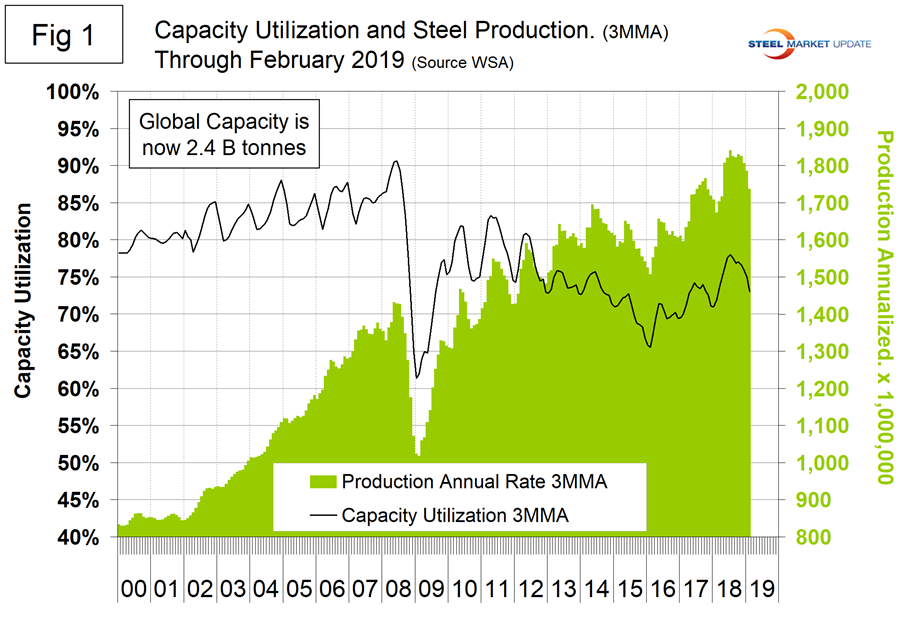
On average, global production on a tons-per-day basis peaked in the early summer in the years 2010 through 2016, but in 2017 and 2018 the second-half downtrend was delayed until the fourth quarter, on a 3MMA basis. Figure 2 shows the average tons per day of production for each month since 2008. On average, February increased by 3.35 percent. This year, February increased by 1.09 percent.
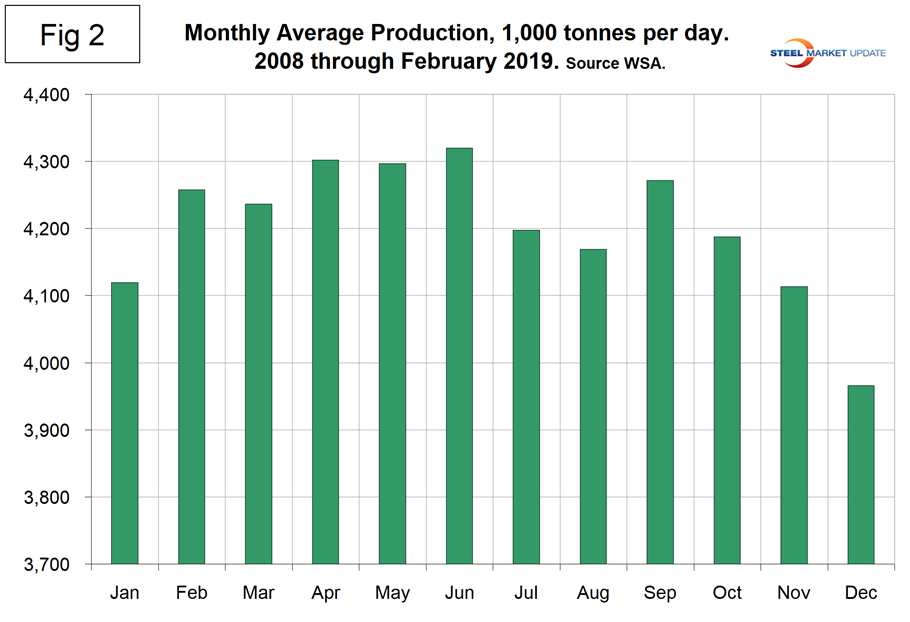
Figure 3 shows the year-over-year growth rate of global production since February 2005. Growth in three months through February was 3.8 percent, down from 5.2 percent in November. Note, this is not a seasonal effect as we are considering year-over-year changes.
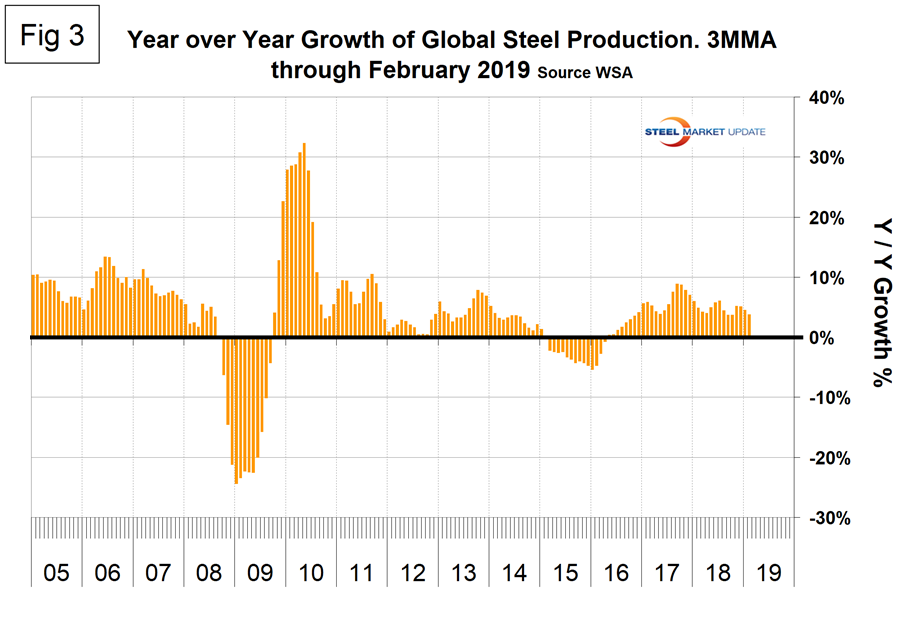
Table 1 shows global production broken down into regions, the production of the top 10 nations in the single month of February, and their share of the global total. It also shows the latest three months and 12 months of production through February with year-over-year growth rates for each period. Regions are shown in white font and individual nations in beige. The world overall had positive growth of 3.8 percent in three months and 4.8 percent in 12 months through February. When the three-month growth rate is lower than the 12-month growth rate, as it was in February, we interpret this to be a sign of negative momentum. On the same basis in February, China grew by 8.8 percent and 7.4 percent, and therefore had positive momentum. All regions except North America and Asia had negative growth in three months through February year-over-year. Table 1 shows that North America was up by 4.5 percent in three months. Within North America, production was up by 8.3 percent in the U.S., down by 1.5 percent in Canada and down by 6.8 percent in Mexico. (Canada and Mexico are not shown in Table 1.)
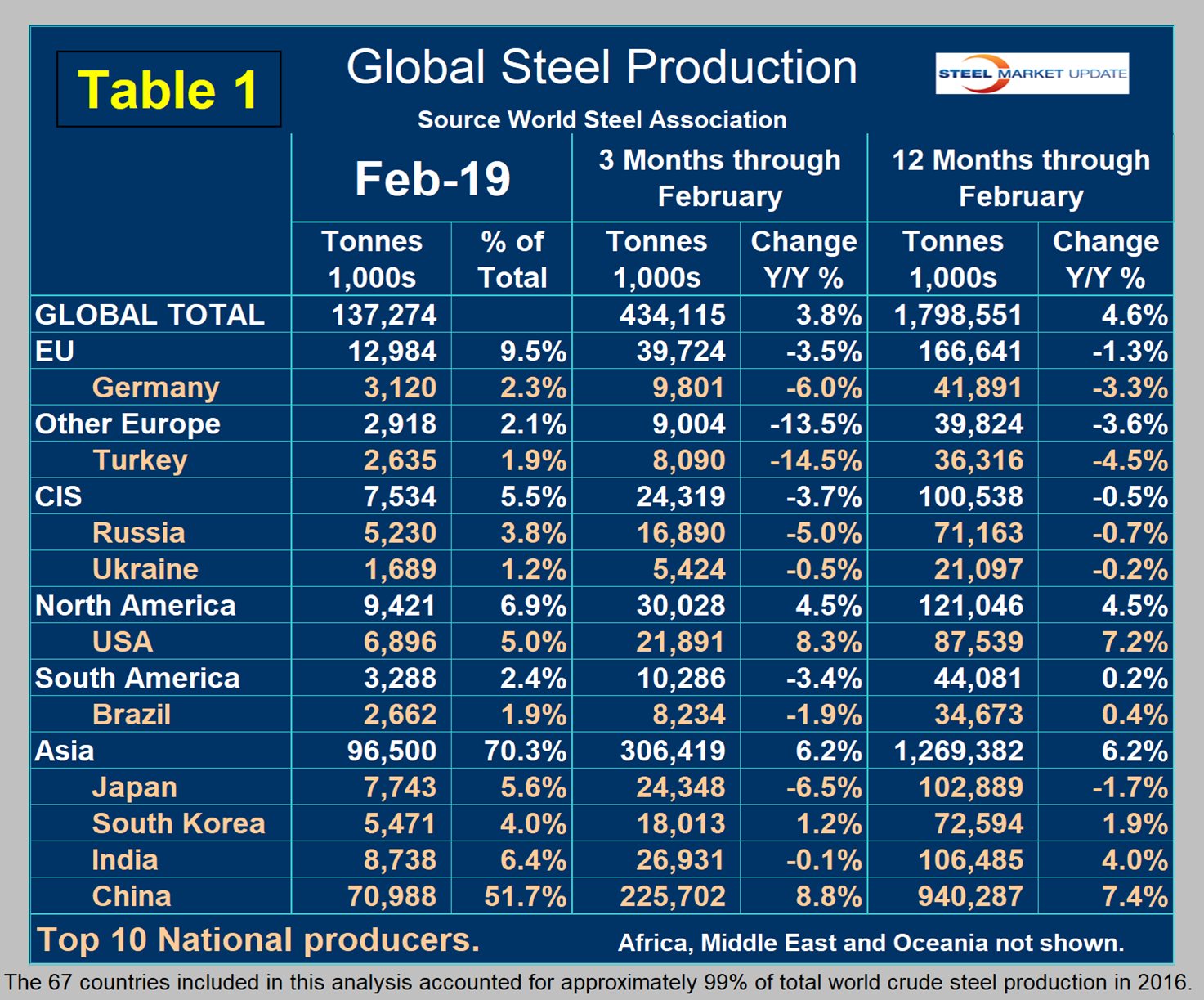
In the 12 months of 2018, 119.9 million metric tons were produced in North America of which 72.3 percent was produced in the U.S., 10.9 percent in Canada and 16.8 percent in Mexico.
Figure 4 shows China’s production since 2005. As just stated, global steel production was up by 3.8 percent in three months through February year-over-year with negative momentum, while China was up by 8.8 percent with positive momentum. This misses the main point, though, because in the first two months of 2019, world steel production, excluding China, contracted.
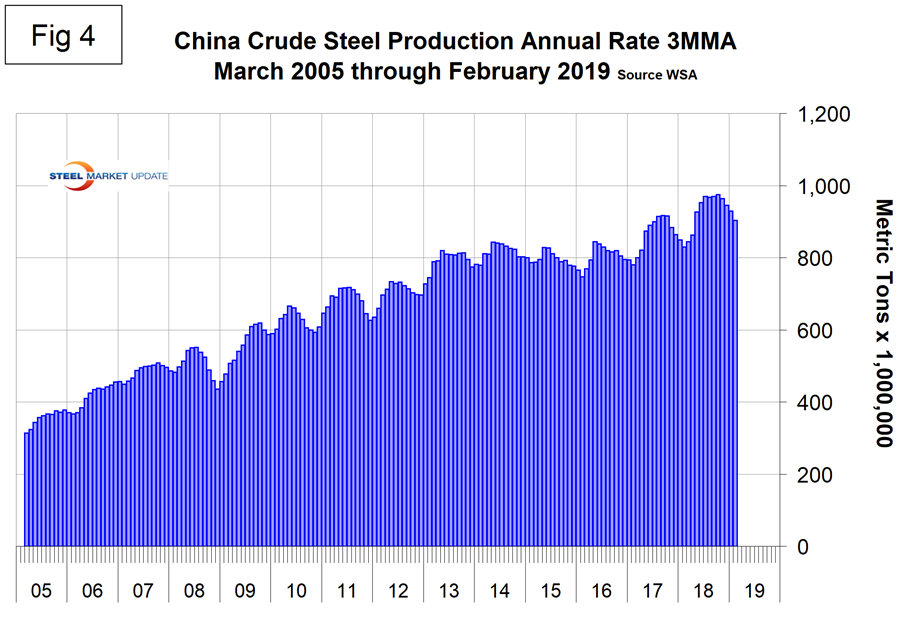
Figure 5 shows the growth of China’s steel production since January 2013 and Figure 6 shows the growth of global steel excluding China, both to the same scale and time period. The rest of the world contracted by 0.3 percent in January and 1.2 percent in February based on the 3MMA of production. China’s domination of the global steel market is increasing and will likely have months in 2019 when the annualized rate will exceed one billion metric tons of crude production. The WSA is forecasting a deceleration in China’s steel production growth in 2019. The chairman of the World Steel economics committee stated recently that China is expected to experience zero growth in 2019, down from 6 percent in 2018. This is partly a result of trade tensions with the U.S.
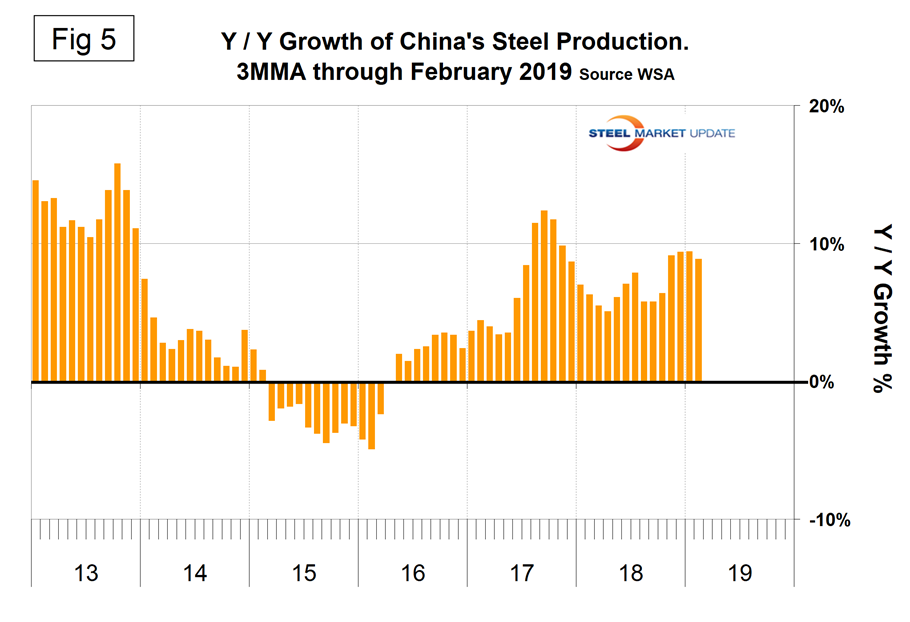
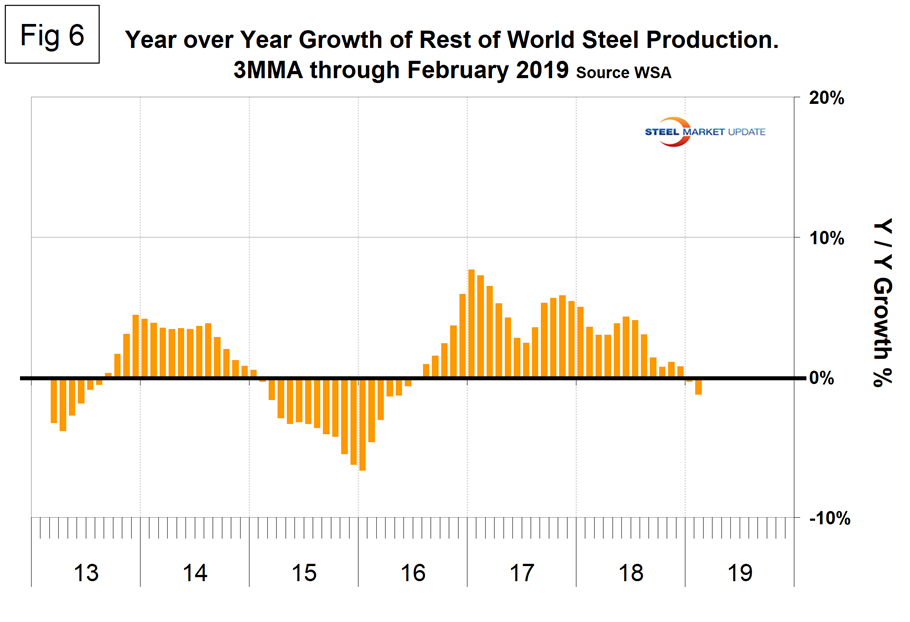
The October 2018 WSA Short Range Outlook (SRO) for apparent steel consumption in 2018 and 2019 is shown by region in Figure 7. The WSA forecasts global steel demand will reach 1,657.9 Mt in 2018, an increase of 3.9 percent over 2017. In 2019, it is forecast that global steel demand will grow by 1.4 percent to reach 1,681.2 Mt. The next forecast will be released in April 2019. (Note, the essence of this piece is crude steel production, therefore the numbers are greater than for steel consumption which relates to rolled products.)
Commenting on the outlook, the chairman of WSA’s economics committee said, “The outlook for steel demand in the U.S. remains robust on the back of the strong economic fundamentals.”
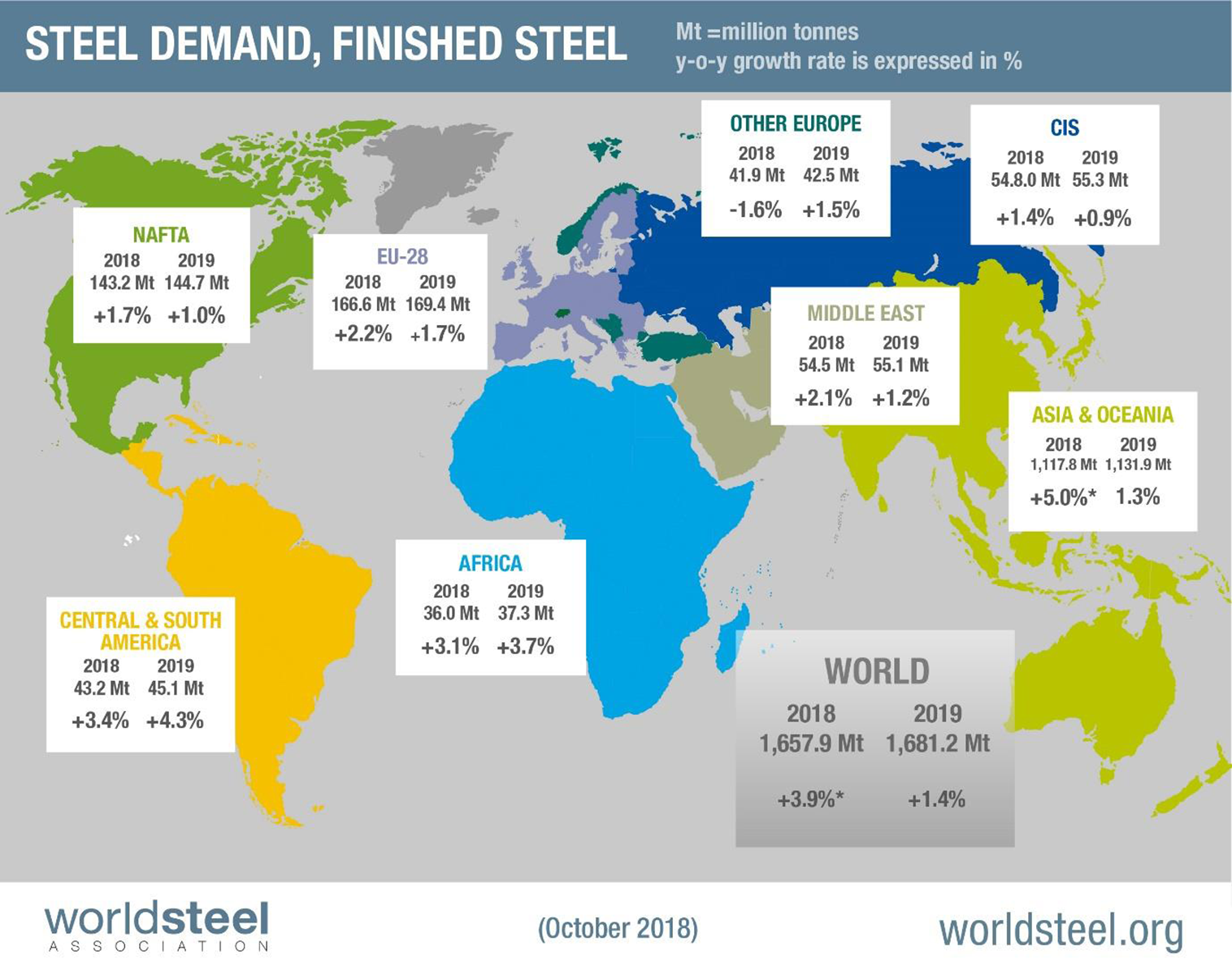
SMU Comment: The rest of the world had negative year-over-year growth in steel production in three months through both January and February, but China kept rolling along. The recent statement by the chairman of the World Steel economics committee reported above seems outrageous. There is no way growth of China’s steel production in 2019 will be zero. New plants are coming on stream in China and almost all of these are BOF-based, according to the August report by the OECD Steel Committee.
This analysis is based on data made public monthly by the World Steel Association. The WSA is one of the largest industry associations in the world. Members represent approximately 85 percent of the world’s steel production, including over 160 steel producers, national and regional steel industry associations and steel research institutes.







